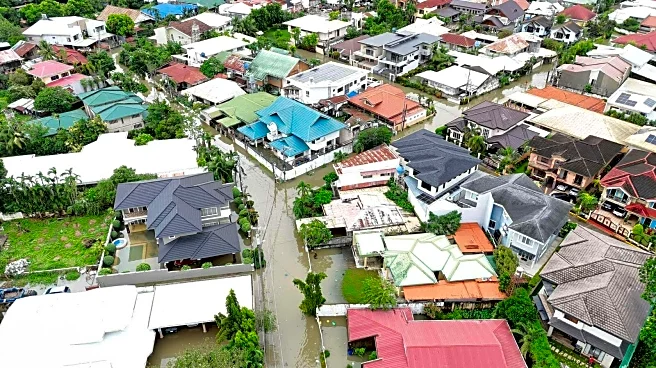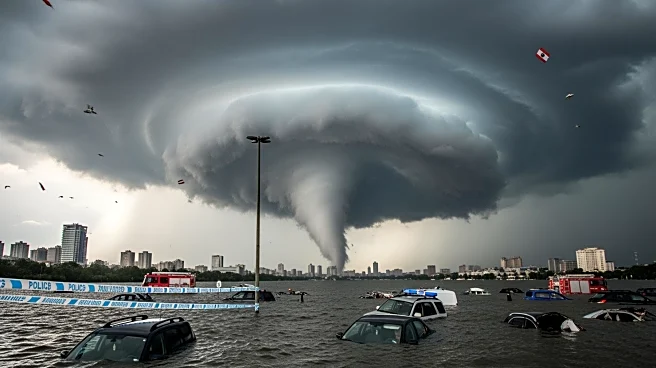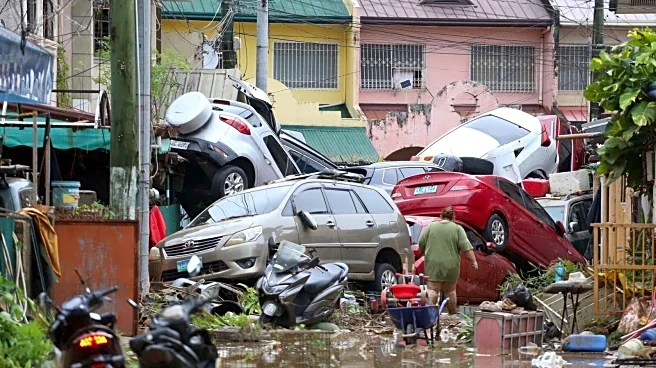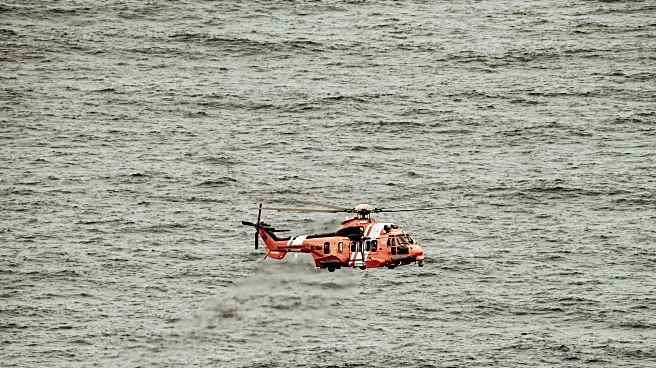What's Happening?
Typhoon Kalmaegi has caused significant destruction in the central Philippines, particularly on the island of Cebu. The storm, one of the strongest this year, has resulted in at least 26 fatalities and forced
hundreds of thousands to evacuate. Floodwaters have inundated entire towns, and many residents have sought refuge on rooftops. The Philippine Air Force reported a helicopter crash during relief efforts, resulting in the deaths of six crew members. The typhoon has weakened but continues to pose a threat as it moves across the Visayas islands.
Why It's Important?
The impact of Typhoon Kalmaegi highlights the vulnerability of the Philippines to severe weather events, exacerbated by climate change. The extensive damage to infrastructure and homes underscores the need for improved disaster preparedness and response strategies. The loss of life and displacement of residents will have long-term social and economic repercussions, straining local resources and recovery efforts. The situation calls for international aid and support to assist in relief and rebuilding efforts.
What's Next?
As the typhoon moves towards the South China Sea, authorities are focused on rescue and relief operations. Efforts are underway to provide shelter, food, and medical assistance to affected communities. The government may seek international assistance to bolster recovery efforts. The incident may prompt a review of disaster response protocols and infrastructure resilience to better prepare for future natural disasters.













